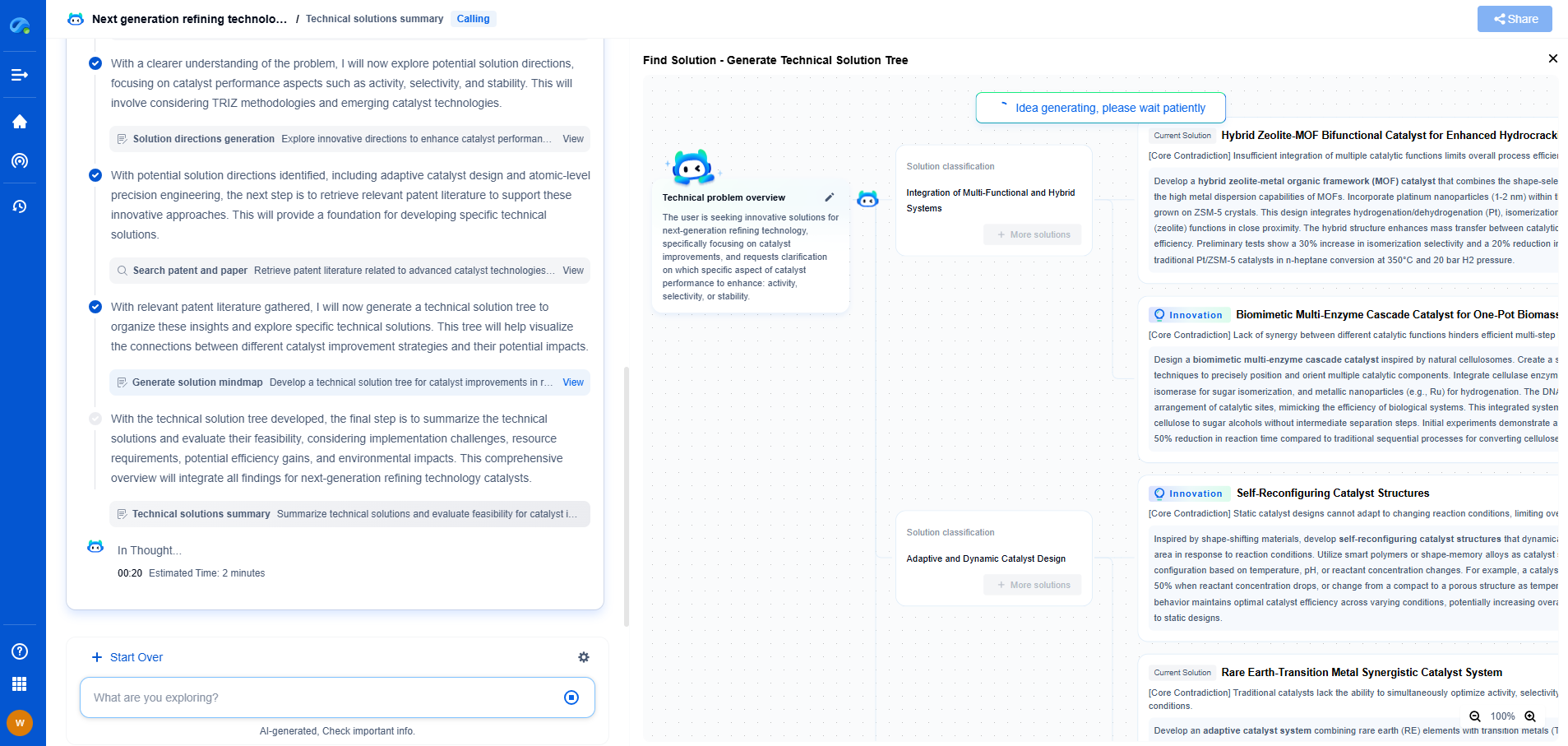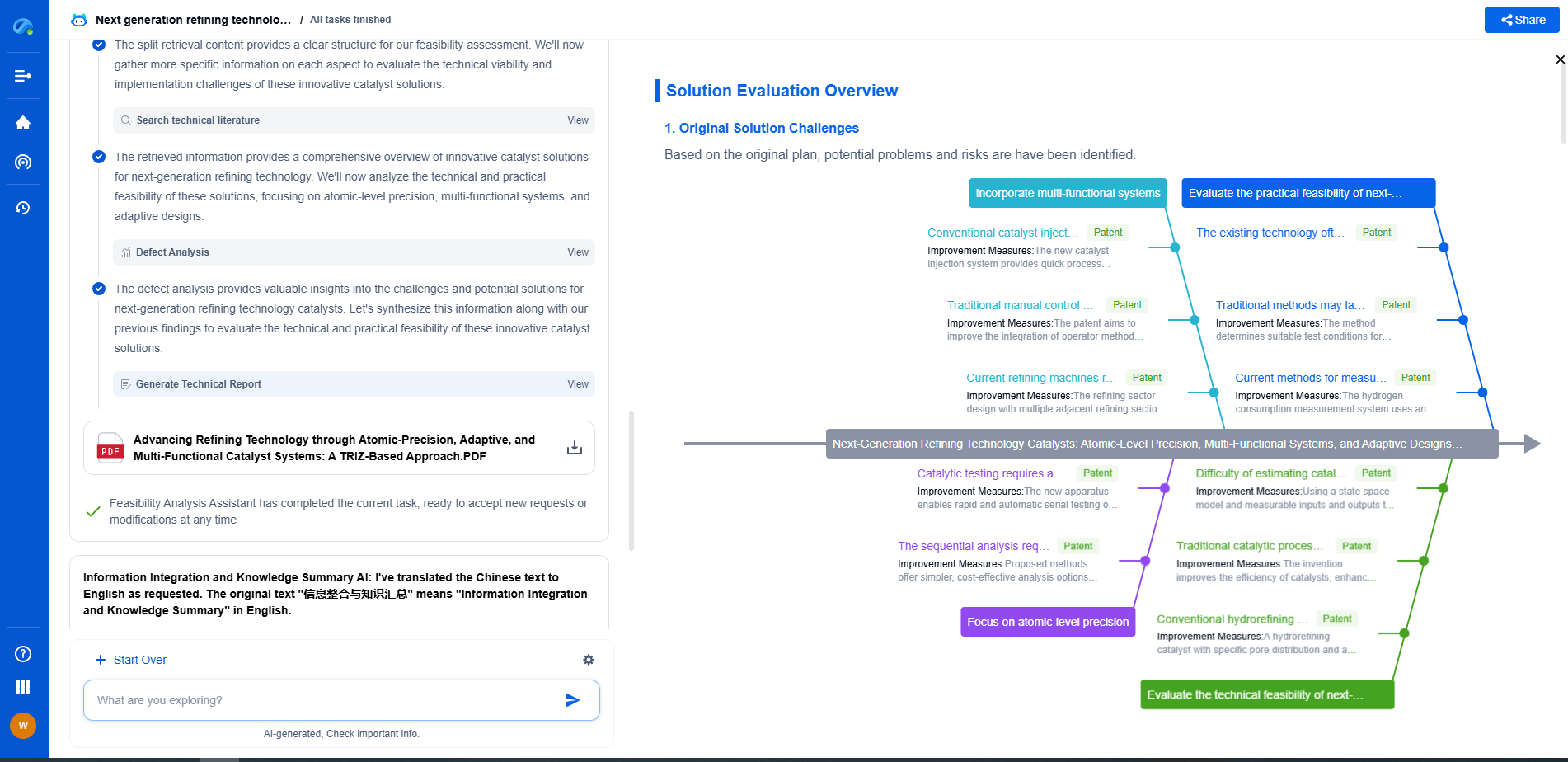How to Prevent Ground Loops in Industrial Sensor Networks?
JUN 26, 2025 |
In industrial sensor networks, ground loops are a common problem that can lead to signal interference, inaccurate data, and damage to equipment. A ground loop occurs when there is more than one ground connection path between devices, creating a loop through which unintended current can flow. This results in a potential difference that disrupts the signal integrity. Understanding the causes and implications of ground loops is the first step in preventing them in your sensor network.
Identifying the Causes of Ground Loops
Ground loops typically arise due to improper grounding or differences in ground potential between different parts of the network. Factors that contribute to ground loops include:
1. **Multiple Grounding Points:** When devices are grounded at multiple locations with different potentials, a loop is created, allowing current to flow through the ground path.
2. **Long Cable Runs:** Extensive cable lengths can increase the risk of ground loops, especially if the cables run through areas with differing electrical potentials.
3. **Different Power Sources:** When devices in a network are powered from different sources, the potential difference between these sources can introduce ground loops.
Preventing Ground Loops
Preventing ground loops requires careful design and implementation of the sensor network. Here are some strategies to consider:
1. **Single Point Grounding:**
To minimize the risk of ground loops, ensure that all devices in your sensor network share a common ground point. This single point of grounding helps maintain consistent potential across the network, reducing the risk of loops.
2. **Use of Isolation:**
Implementing electrical isolation can effectively prevent ground loops. Use isolation transformers, opto-isolators, or differential signaling to isolate different sections of the network, ensuring that potential differences do not lead to loop formation.
3. **Cable Management:**
Proper cable management is crucial in preventing ground loops. Use shielded twisted-pair cables to minimize electromagnetic interference and keep cable runs as short as possible. Avoid running sensor cables alongside power cables to prevent induction.
4. **Balanced Circuits:**
Implement balanced circuits with differential inputs and outputs to reduce susceptibility to ground loops. Differential signaling allows the system to ignore common-mode noise, including that caused by ground loops.
5. **Regular Maintenance and Testing:**
Regularly inspect and test the grounding systems and connections within your network. Use ground loop testers to detect the presence of loops and rectify any grounding issues promptly.
Addressing Common Misconceptions
There are several misconceptions about ground loops that can lead to ineffective solutions:
- **Myth:** Ground loops can be fixed by simply adding more grounding connections. In reality, this often exacerbates the problem by creating more paths for loop currents.
- **Myth:** Using thicker cables will eliminate ground loops. While it reduces resistance, it does not address the root cause of potential differences between grounds.
Conclusion
Ground loops can significantly impact the performance and reliability of industrial sensor networks. By understanding their causes and implementing effective prevention strategies, you can enhance the integrity and accuracy of your network. Focus on single-point grounding, isolation techniques, proper cable management, and regular maintenance to mitigate the risks associated with ground loops. With careful planning and attention to detail, you can ensure your sensor network operates smoothly and effectively, free from the disruptions caused by ground loops.
Stay Ahead in Power Systems Innovation
From intelligent microgrids and energy storage integration to dynamic load balancing and DC-DC converter optimization, the power supply systems domain is rapidly evolving to meet the demands of electrification, decarbonization, and energy resilience.
In such a high-stakes environment, how can your R&D and patent strategy keep up?
Patsnap Eureka, our intelligent AI assistant built for R&D professionals in high-tech sectors, empowers you with real-time expert-level analysis, technology roadmap exploration, and strategic mapping of core patents—all within a seamless, user-friendly interface.
👉 Experience how Patsnap Eureka can supercharge your workflow in power systems R&D and IP analysis. Request a live demo or start your trial today.
- R&D
- Intellectual Property
- Life Sciences
- Materials
- Tech Scout
- Unparalleled Data Quality
- Higher Quality Content
- 60% Fewer Hallucinations
Browse by: Latest US Patents, China's latest patents, Technical Efficacy Thesaurus, Application Domain, Technology Topic, Popular Technical Reports.
© 2025 PatSnap. All rights reserved.Legal|Privacy policy|Modern Slavery Act Transparency Statement|Sitemap|About US| Contact US: help@patsnap.com

